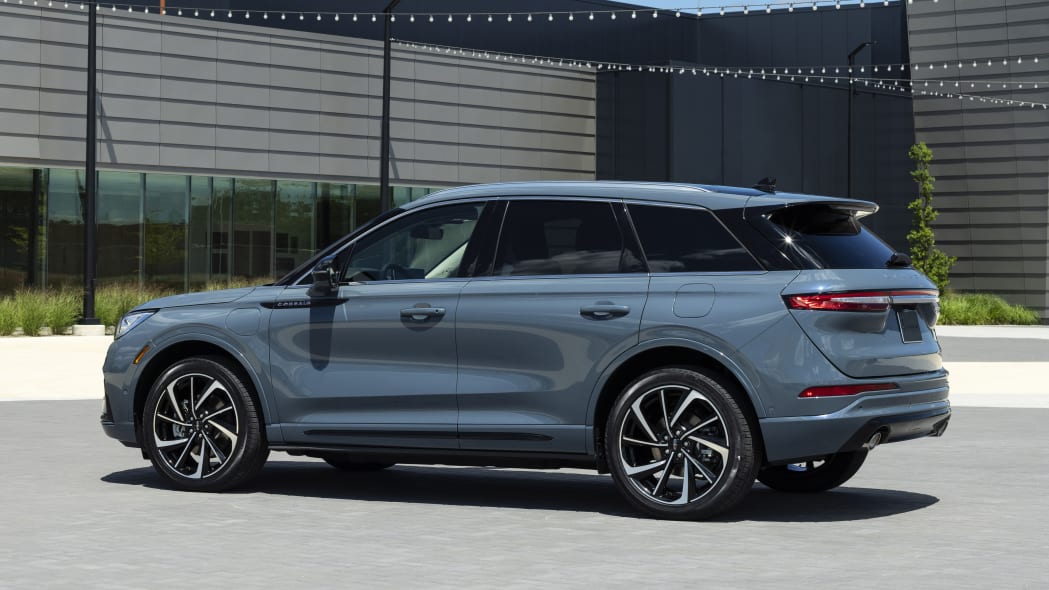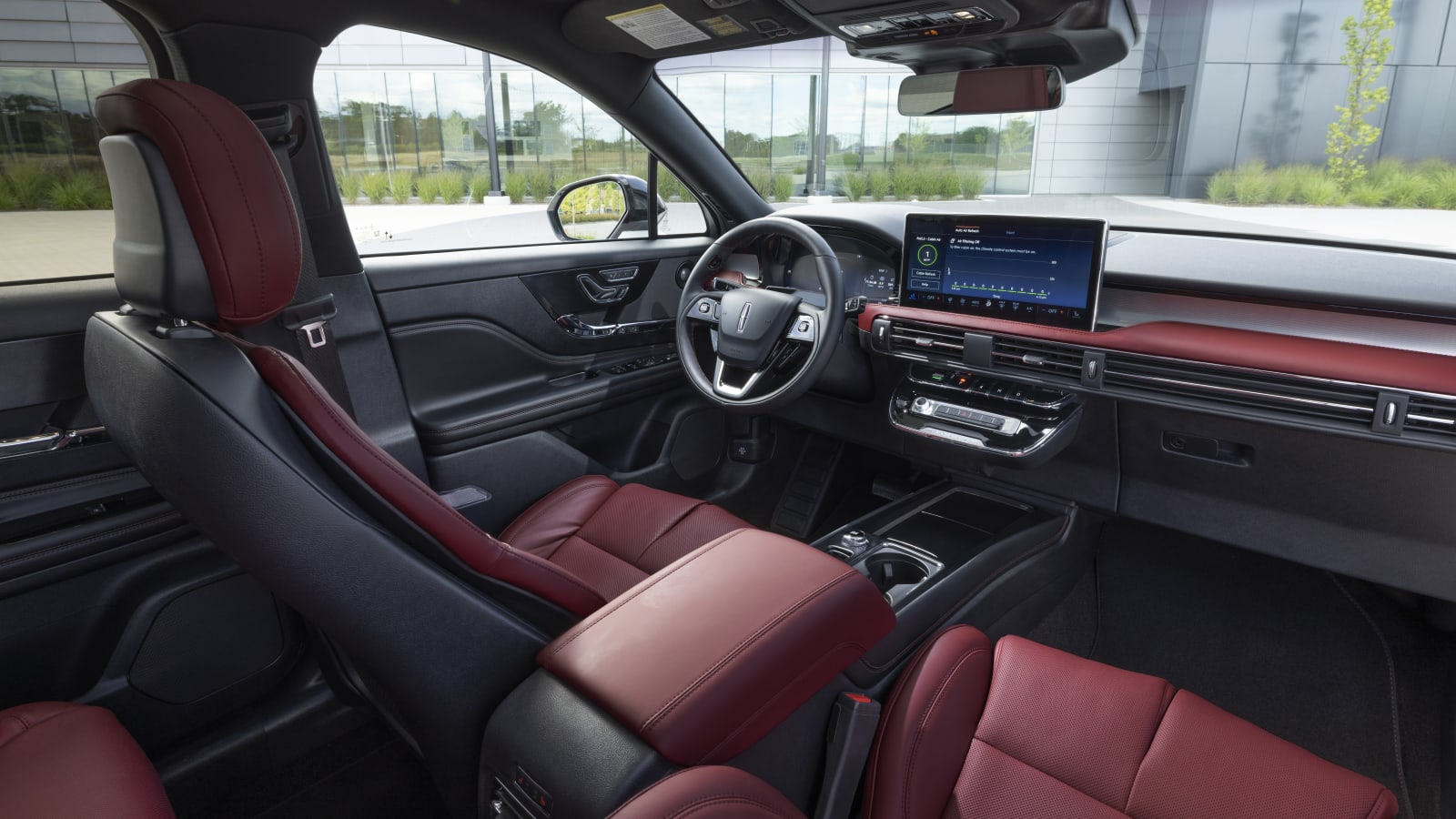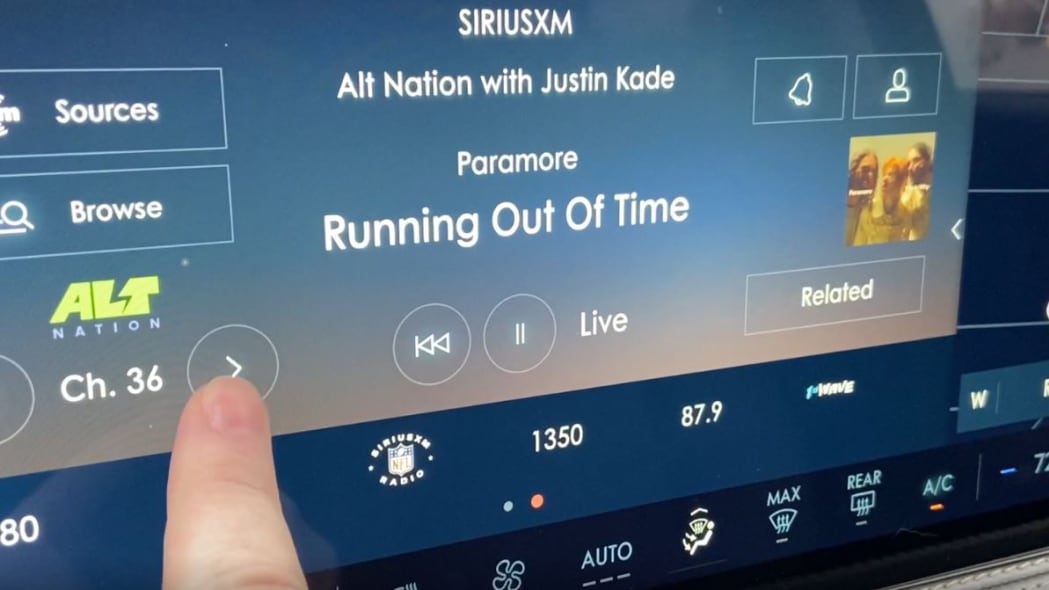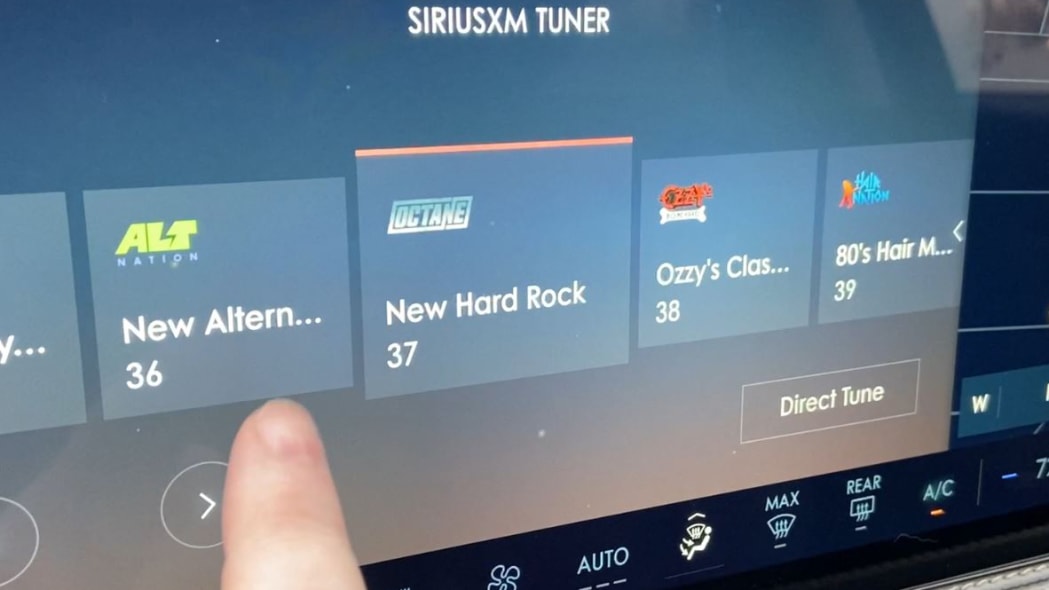While 2023 brings only a refresh to the Lincoln Corsair, it’s a fairly robust one. It loses an engine, gains BlueCruise and receives an interior overhaul featuring a new infotainment screen running the latest version of Sync 4. Corsair may be Lincoln’s best-seller, but it competes against a variety of big-sellers in terms of both size and price. Take your pick from the likes of the Cadillac XT4, Audi Q3, Lexus NX or the BMW X1, just to name a select few; and soon they will be joined by Alfa Romeo’s new Tonale, which lines up surprisingly well with the baby Lincoln.
Like virtually everything in its class, the 2023 Lincoln Corsair’s standard engine is a 2.0-liter turbocharged four-cylinder, which in this case produces 250 horsepower and 275 pound-feet of torque. Gone is the previously available 2.3-liter upgrade that apparently wasn’t popular.
For 2023, the only other option is therefore the returning plug-in hybrid model, which produces a reasonable (and carry-over) 266 horses. Unlike the Escape PHEV on which it’s based, the plug-in Corsair comes standard with all-wheel drive. With just 16 more horsepower compared to the 2.0T and more than 560 additional pounds to motivate, it relies on the instant torque of its electric motors to get off the line with authority. Lincoln gave us the choice of sampling either the standard turbo-four or PHEV for our quick outing in the Corsair; we opted for the plug-in for symmetry with our 2021 outing.
As with virtually all midcycle updates, some exterior styling elements were updated or deleted. The grille is taller (and consequently larger) and is framed on the bottom by a new horizontal protrusion. PHEV models get a metallic foiling effect on the grille mesh. In the rear, it’s business as usual.


Inside, the dash is redesigned around a new 13.2-inch touchscreen running Sync 4.0. Besides an updated user interface (more on that later), the screen now houses virtually all of the media and climate controls that were previously located as buttons and knobs on the Lincoln’s center stack. All that remains on the consequently shrunken stack is a single volume knob and various vehicle controls like max defrost, auto stop/start and the hazard lights. The start/stop button has also been relocated next to the piano-key transmission controls. Through all of that, Lincoln managed to make access to the enlarged media storage bin easier. Yay?
Perhaps the most significant change for the 2023 Corsair is the addition of Lincoln’s highway hands-free driving suite. Originally launched on the Navigator and dubbed “ActiveGlide,” the system has been renamed Lincoln BlueCruise for 2023 to align with Ford’s nomenclature (and perhaps because “ActiveGlide” was a silly name). Specifically, it’s BlueCruise 1.2 – the same, latest version rolling out throughout Ford’s lineup. I didn’t have the opportunity to test this thoroughly in the Corsair, but recently sampled the latest updates in a Ford Mustang Mach-E running the same software, and I’m pleased to report that it performs as advertised; look for an upcoming review for more on that.
Corsair occupies a space in the U.S. market where PHEV options are still the exception rather than the norm. It’s low on power compared to other, slightly larger competitors such as the 304-horsepower Lexus NX 450+ and the 362-hp Audi Q5 PHEV. It also lacks the NX’s electric range, offering just 28 miles on a charge versus 37. On paper, the forthcoming Alfa Romeo Tonale PHEV will match up nicely – it offers similar EV range (likely about 30 miles) but aims for a more enthusiast-oriented package.

While we’ve yet to drive the plug-in Alfa, your author has driven the mechanically similar 2024 Dodge Hornet R/T plug-in hybrid. Based on that, it seems likely that the Alfa will have a dynamic edge over the cushy Corsair, whether in turbo or hybrid guise. That’s not an insult so much as an acknowledgment of their diverging approaches to luxury.
The Corsair’s powertrain is plenty responsive around town, but its chassis leans more toward commuting in comfort than carving up back roads. When he drove the 2021 Corsair, News Editor Joel Stocksdale referred to its two suspension modes as “particularly soft and somewhat firmer”; nothing has changed. It’s also surprisingly quiet inside for a hybrid; and frankly, quiet for something based on the Escape, which is not nearly so isolated from the outside world. That said, the 2.5-liter gas engine doesn’t make a particularly pleasing sound; the Hornet (and by extension, Tonale) has the benefit of a turbocharger muffling the incoherent buzzing of its tiny four-pot. The most obvious nod to the Corsair’s humble underpinnings is the seating position.
With nothing beyond business as usual to report from the chassis, that leaves us to focus on the 2023 Corsair’s most significant interior upgrade: the new Sync 4 infotainment system. Among its upsides are its responsiveness and attractive, versatile screen layout. It makes good use of its widescreen format, and individual screens can be resized to allow multiple features to be utilized simultaneously. The climate controls that once resided beneath the screen now live within it, occupying the bottom inch and a half or so for easy access at all times.


Take the radio tuning interface, for example, pictured above. When you tap to manually scroll through stations, the UI re-focuses the interface on the station selection. That’s fine on its own, but when the focus changes, the station icons and tuning controls move. So, if you’re trying to change stations while underway, you have to look back at the screen a second time in order to locate the tuning button all over again. So, not only is there nothing to physically feel, but you now have to hunt UI elements around the screen like some ridiculous game of whack-a-mole. Who thought this was a good idea?
There’s one more update to cover for 2023: the price. With MSRPs skyrocketing all over the industry, it’s no surprise that the Corsair’s redesign coincides with a higher cost. Each trim has increased by almost exactly $2,000, including the base price going up to $40,085. Hey, at least we got a redesign with it. All told, our loaded Grand Touring tester rang the till at nearly $65,000. Like the Escape on which it is based, the Corsair gets expensive with options. Even at its base price of $55,280, the Grand Touring (which is PHEV-only) ain’t cheap. That’s $10 grand more expensive than the Tonale. But unlike the Italian-built Alfa Romeo, the Corsair PHEV is eligible for tax credits.
But for all of the comparisons to Alfa, Lincoln’s singular focus on comfort-oriented luxury makes them a poor match for each other. Up against the Lexus NX, though, I’d have to give the nod to the Corsair. Its refined powertrain, smooth ride, more user-friendly tech and absence of sporting pretense make for a more coherent, appealing package. But for the love of all things holy, stop taking all of our buttons!
Related video:
